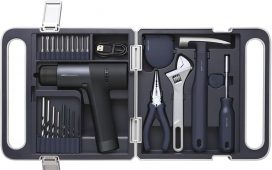
Where would we be without hinges? A lot of the swinging and rotating mechanisms people take for granted nowadays exist thanks to these simple yet incredibly effective tools.
Most engineers, industrial and construction workers, mechanics, and building designers have both theoretical and practical knowledge of how they work and how to use them. Most ordinary folk probably don’t, usually because they don’t have to know in the first place.
But if you’re working on some DIY projects at home or making repairs, it wouldn’t hurt to learn more about this specific piece of hardware. Appreciating how hinges function may even help you determine which ones best suit your purposes.
Here’s what you need to know about commonly used hinges and how they work:
1. Piano Hinges
Due to their length, they resemble pianos. But technically, they’re known as continuous hinges because they run along the length of the flat edges between the two planes they connect.
These hinges are designed to join two objects that are of the same length, providing a lot of extended stability and support. Thanks to these features, furniture makers and designers use them for various applications.
You can typically find piano hinges being used to connect shed doors, folding work desks, storage boxes, and cabinets. They also work well with parting walls and shower doors. Even your workbench in your garage can fold over thanks to this nifty contraption. You can check out some more piano hinge facts before you purchase them for your projects.
2. Ball Bearing Hinges
Ball bearing hinges are another type of hinge commonly used in many industries and households. These are primarily used to support heavy and wide doors.
In these contraptions, a ball bearing is placed between two knuckles. Due to the shape and surface area provided by the bearings, moving these knuckles produces little to no friction. This has the added effect of producing minimal noise, making them a great fit for structures that need to feel unobtrusive whenever you move them. These are the reasons why you can usually find them in front doors in homes, commercial areas, and warehouses.
They have their limits, of course. Some large doors direct friction into the hinges themselves due to their sheer weight. To address this, people install lubricated bearings between the pivot’s knuckles to reduce resistance during motion as much as possible.

3. Concealed Hinges
Also known as invisible hinges, they are designed to meld right into the two planes they connect, creating the illusion of one, smooth, continuous surface once both are aligned.
They work by using a combination of pivots and brackets to provide support and motion while merging into the structures they hold. This makes them perfect for those who want to create structures that look seamless and aesthetically pleasing.
You can usually find them in cabinets, doors, and shelves built in a post-modern style. Some come with special screws and springs that allow them to be self-closing for an additional layer of convenience.
Obviously, concealed hinges work best when they match the form and design of the structures they’re connecting. So, consider what the overall feel of the thing you’re creating is before choosing the color, width, and form of the hinges you buy.
4. Corner Hinges
As the name suggests, these hinges are found in the corners of the structures they connect.
Corner hinges are shorter than the standard door hinge. This makes them suit structures in tight or narrow areas. You can usually find them in bathrooms and storage areas due to how easy they are to install and adjust. If you use them smartly, you can use them for some clever kitchen makeovers.
5. Butterfly Hinges
They’re called this thanks to the unique look they have when opened. Once the two halves spread, they look like a pair of butterfly wings. This decorative nature makes people use them as finishes for shutters, trunks, cupboards, cabinets, and the like.
For a butterfly hinge to be used to the fullest, it has to be placed somewhere people can easily see it. Kitchen and living room fixtures that need an extra splash of ornamentation are great places for using one.
6. Security Hinges
From the name alone, you know that this is used to heighten security. These hinges are designed to prevent someone from breaking structures like doors and closets to steal or ruin what’s inside. They’re a staple in places that need extra protection.
These usually come with security tabs or pins used to anchor them tightly into the surfaces they connect. In turn, they make these contraptions hard to break. Have a professional install these hinges on your main door or whichever fixture you want to safeguard.
Know Which One to Pick
Whether you’re planning to repair or create doors, windows, furniture, cabinets, and many other useful fixtures, knowing which hinge to pick can save you time and effort as well as get the level of functionality and utility you need. These useful insights should make it easier for you. Make sure to compare quality and prices to get the best out of your purchase.


